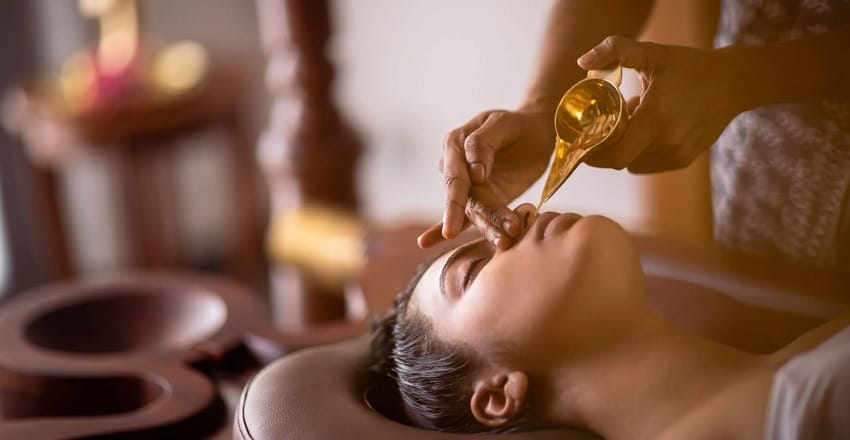Panchakarma, the ultimate detoxification therapy in Ayurveda, is a deeply transformative process. It is not just about symptomatic relief—it is a complete reset for the body, mind, and spirit. However, many people make the critical mistake of discontinuing Panchakarma as soon as they start feeling better. This is one of the worst things you can do for your health.
Why Completing Panchakarma Is Essential
1. Ayurveda Treats the Root Cause, Not Just Symptoms
Unlike modern medicine, which often focuses on suppressing symptoms, Ayurveda aims to eliminate the root cause of disease. Panchakarma is designed to go deep into the body, remove accumulated toxins (Ama), and restore doshic balance. If left incomplete, the root cause remains unaddressed, and symptoms can return—sometimes even worse than before.
2. The Process Works in Phases
Panchakarma is a structured therapy with three main phases:
- Purvakarma (Preparation) – Prepares the body for detoxification.
- Pradhanakarma (Main Detox) – The core cleansing therapies.
- Paschatkarma (Post-Therapy Care) – The rejuvenation phase to rebuild strength and immunity.
If you stop midway, the body remains vulnerable, as the toxins are stirred up but not fully eliminated, leading to an aggravated state of health.
3. Detox Without Rejuvenation Can Be Harmful
The final phase of Panchakarma (Paschatkarma) is crucial for nourishing and strengthening the body. Skipping this phase can leave you feeling weak, depleted, and more prone to illness. Imagine cleaning a wound but not applying medicine afterward—it may get infected again.
4. Temporary Relief Can Be Deceptive
Feeling better does not mean healing is complete. Many disorders go through a healing crisis before true recovery occurs. Stopping treatment midway is like quitting antibiotics after the first day of relief—it allows the problem to resurface with greater intensity.
Ayurveda vs. Modern Medicine: A Fundamental Difference
Holistic Healing vs. Symptom Suppression
Modern medicine focuses on quick fixes—painkillers for pain, antacids for acidity, and steroids for inflammation. Ayurveda, on the other hand, sees disease as an imbalance in the doshas (Vata, Pitta, Kapha) and works to restore harmony through diet, lifestyle, herbs, and therapies like Panchakarma.
Root Cause vs. Surface-Level Treatment
Ayurveda identifies the underlying cause of disease and removes it, preventing recurrence. Modern medicine often masks symptoms, leading to dependency on medications and potential side effects.
Personalized Care vs. One-Size-Fits-All
Ayurveda treats every individual based on their unique Prakriti (body constitution). Panchakarma is customized according to one’s doshic imbalance, whereas modern medicine often follows a generic approach to treatment.
Detoxification & Rejuvenation vs. Symptom Management
Panchakarma not only cleanses the body but also rebuilds its strength, making it a long-term solution rather than a temporary fix. Modern medicine rarely emphasizes detoxification, leading to toxin accumulation over time.
Final Thoughts
Panchakarma is a journey, not a quick fix. Stopping midway is like leaving a bridge half-built—it leaves you stranded. If you truly want long-lasting health, commit to completing the process under the guidance of an experienced Ayurveda expert. Trust the wisdom of Ayurveda, and let your body heal completely, the way nature intended.
At Anammyaa Wellness, we ensure a structured and personalized Panchakarma journey for deep, lasting healing. If you’re considering Panchakarma, commit fully—it is an investment in your lifelong well-being.
Your health deserves complete healing, not a temporary pause.
Contact us to know more!



